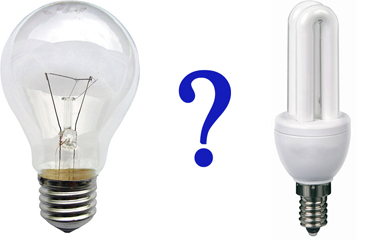Energy saving. What is more profitable?

Energy saving in numbers.
Written based on the topic in Q&A. The
question is marked as resolved, but I don’t like such a calculation ... where is the habrosmekalka and habroeruditsiya?
So, the specific task is given:
Energy-saving light bulb:
Price - 120 rubles
Power - 15 W
Declared by the manufacturer service life - 8000 hours
Regular light bulb:
Price - 10 rubles
Power - 60 W
Declared by the manufacturer service life - 1000 hours
Cost 1 kW / h - 1 , 96 rubles.
I want to note, and for me it is important that for 120 rubles you get not only a savings, but also a guarantee for it for 1 year, and there are no guarantees for incandescent lamps. Formally, of course, we can use the ZoZPP, but the article is not about that.
The pros and cons of incandescent and fluorescent lamps will not be discussed here either, they have already been considered .
Get to the point. Actually, the calculations themselves do not lie in the question “what is more profitable?” (Because which is more profitable - and so it is clear), but when, with such a difference in price, will the savings be paid off and start saving? It’s not difficult to calculate:
- 60 - 15 = 45 W (we save so much per hour)
- 120 - 10 = 110 rubles. (This amount must be worked out to start saving)
- (110 / 1.96) so much kWh must be worked out to pay off. We will translate in watts and divide by the number of watts that we save per hour, we get * 1000/45 = 1247.16 hours.
So we got a specific answer for the task.
As a result, with an average work of 8-10 hours a day, we begin to receive PROFIT after 4 - 6 months. By that time, the incandescent lamp has already worked out its term of 1000 hours.
PS I’ll add from myself, I have been using saving lamps for more than two years. All 8 pieces are still working properly.
